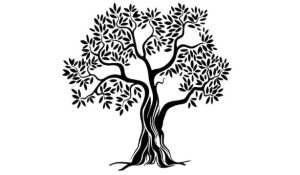The changing branches of Australia’s family tree
A new and fascinating picture of Australia’s population has emerged from a fresh analysis of census data that carves the nation up into three distinct blocs.
Writer and journalist George Megalogenis has worked with the Australian Bureau of Statistics to divide Australia’s 26 million people to three distinct tribes; and this perspective has far-reaching implications for policy and politics into the future.
These tribes are termed, for simplicity: First Australians, Old Australians and New Australians.
First Australians are people of indigenous background, Old Australians are non-Indigenous people who have been in Australia at least three generations and New Australians are people who were born overseas or who have at least one migrant parent.
 Using data from the 2021 Census, Megalogenis and the ABS discovered that for the first time, New Australians outnumber the rest.
Using data from the 2021 Census, Megalogenis and the ABS discovered that for the first time, New Australians outnumber the rest.
Fifty-one per cent of Australia’s population now belong to the New Australian branch with 29 per cent born overseas and 22 per cent with a parent from overseas.
Old Australians amount to 45 per cent of the population and the First Australian branch four per cent.
Megalogenis says this represents 13.2 million New Australians, 11.8 Old Australians and one million First Australians.
“This shows how quickly the family tree has changed its shape and will continue to evolve in favour of New Australia,” he says.
Megalogenis uses the metaphor of a tree with the roots representing First Australians, the trunk representing Old Australia and the branches, New Australia.
“The branches grew five times faster than the trunk between the 2011 and the 2021 census – 32 per cent for New Australia compared to just six per cent for Old Australia,” he says.
“As developed nations like ours rely on migration for the majority of our population growth, we also rely on migrants for the majority of our net natural increase (births minus deaths).
“Old Australia had almost 600,000 children in net terms between 2011 and 2021, where a country of birth was stated. New Australia had almost double that number – 1.15 million,” Megalogenis says.
While Old Australia remains in the majority in Queensland, Tasmania and South Australia, New Australian majorities are evident in Victoria, NSW and WA.
But interestingly, Megalogenis identifies First Australians are the fastest growing part of our family tree with their population increasing 48 per cent between 2011 and 2021.
He says this demographic sea change has implications for issues such as the Voice to Parliament.
“A ‘no’ vote would fracture our family tree at the expense of both the roots and the trunk. The cultural weight of the new Australian majority will grow regardless,” Megalogenis says.
“The language for a new binding national story that includes everyone, without recrimination or condescension, can only flow from a successful ‘yes’ campaign,” he says.












